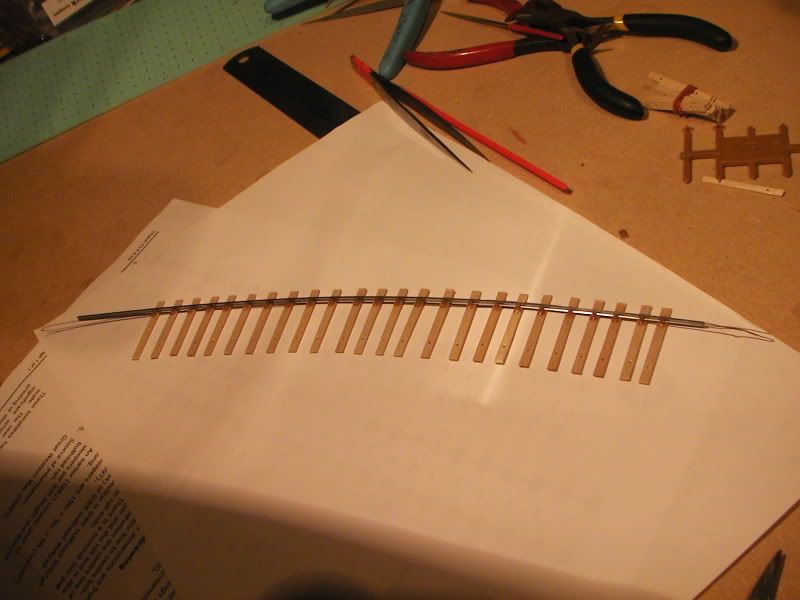Moving to P4 (Post 2)
Pasted from Scaleforum
Curves. I still don't really know what I'm doing. ![]()
I gtot a 4ft bit of cotton today, selotaped it to a pen at the bottom and then drew a few passes on an A4 sheet of paper. Had no bigger. The line wasn't always in the same place but I kinda got the idea.
I am not sure how to build the rails curved, i did originally bend the rail before sliding the chairs on but then ended up straightening it again to build it straight on the (properly scaled this time!) straight template. I only did one rail and when I removed it as usual the sleepers slid all over the place but no worries. I have now roughly bent the rail to the 4ft / 1200mm radius I drew, albeit with several different lines but it's roughly there.
The pic

Am I barking up the wrong tree here? my plan is to thread the other chairs on the next rail, bend it roughly and then gague it from this rail. I do not know if this is what you guys meant, weather it is how you should do it or not. I can't say it will be bang on 4ft because the lines and bends arn't perfect, but I don't know how to get them so anyway.
Incase your wandering, I chose to do a 4ft curve because I want to be running a pacific or two one day and aparently this is the minimum, authough I've heard it will go around less, ewven if it does look odd.
Any ideas? ![]()
(Keith Grovenor said I am on the right track and to carry on as I'm doing, so I'll probably do that) I'll try to make a better quality post with more pics and info like before, this one a bit short)
If it does work out I stil wander how you get the exact curve, I surspect you just fettle and fiddle, tweak and bend until happy..? Err, maybe.
-
 2
2




9 Comments
Recommended Comments
Create an account or sign in to comment
You need to be a member in order to leave a comment
Create an account
Sign up for a new account in our community. It's easy!
Register a new accountSign in
Already have an account? Sign in here.
Sign In Now